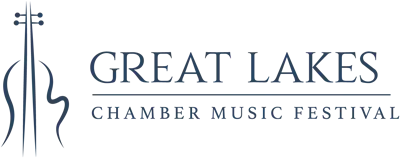Sound Beams
Tuesday, June 10; 7:00 PM
Ty Bouque
—
A tension: truss means two things, torn by competing forces.
The architectural definition has, from the seventeenth century on, signaled a form of beaming, most often wooden, used to brace bridges or buildings. The classic truss is five-beamed, a square bisected into triangles. Triangles are simple but eminently sturdy; you can understand the allure. A truss, according to Engineering Mechanics, “consists of two-force members only, where the members are organized so that the assemblage as a whole behaves as a single object.” It is said that such a rigorous definition allows the truss to take any shape, so long as its connections remain stable. Stable and five and any shape will be important later.
The earlier sense hews closer to etymology. From the Latin torquere, “to twist,” itself from the Proto-Indo-European*terkw- (a root truss shares with torque and torsion but also torture and contort), the 13th-century verb form meant “to load, load up, pack up in a bundle” (relying on the sense of what is wrapped or twisted ‘round). The main residue English has retained of that particular understanding is the phrase trussed up, most often heard around November holidays, referring to what is tightly bound with rope or some such thing.
The conflict at the core of this concert, then, is between a rigid, often planar architectural force, a geometric structure whose job is to hold forever firm, and the twist, what wraps, ensconces, flexes, binds, folds but never along straight lines. A (wooden) truss cannot by definition submit to twisting force, but to truss is precisely what is twisted all around. What both definitions share, however—albeit to opposite ends—is an impulse to stay or bring together. The forces that hold a trussed bird in place restrict its movement into gastro-aesthetic form; the forces of wood that stabilize a bridge lend it rigorous fortitude: trusses, by twist or tightest frame, hold firm.
The Debussy Sonata in G minor for Violin and Piano is, by the repertoire’s standard, an odd little piece precisely for being so little. At half the length of the Kreutzer, it strikes a diminutive stance among a much beefier canon generally more prone to exhaustive virtuosity. Written as one of an unfinished cycle of six sonatas for instruments, one can understand the brevity: colorectal cancer had given the composer less than a year to live.
But short is hardly simple. The work is a tightrope, the consequence of an unusually equalized distribution of responsibility (an assemblage, that is, behaving as a single object): the and in the title matters. The music is unusually reactive to itself, binding the two instruments by an invisible string whose elasticity forces them into exposed dependency. Attend to how they catch each other at a hair’s breadth, how they hem each other in here but breathe expansion to the other there, how when one holds the other inevitably torques but how the result is always two as one. In such a confined space, all formal activity is intensely, almost erotically charged: both are vulnerable in their reliance on the other for the security of the work they build together: trust/trussed.
The premiere in May of 1917—with Gaston Poulet and the composer at the piano—would be Debussy’s last performance. He died shortly after, despite numerous attempts at invasive intervention. (A third, archaic definition, from the 1650s: truss, a surgical appliance to support a rupture.)
The implicit materiality of violin and piano—tensile wooden objects brought to audibility—is literalized in Steve Reich. Written in 1973—only a year after Clapping Music (and with the identical rhythm appearing in the second entrance)—Music for Pieces of Wood is a clamorous thing. Five interlocking parts, none of them entirely virtuosic on their own, combine into a dramatic showcase of coordination and endurance. It is percussion quintessence: pure rhythm as music.
But where Debussy’s magic is a breathtaking array of color, the magic of Music for Pieces of Wood is achieved by perfect homogeneity. Because all five players share identical sets of wood, each new layer becomes immediately enfolded in the whole, resulting in a perceptual trick: the experienced pulse of the music appears to change with stunning variety, without the ongoing music changing even a bit. Sameness is never heard the same. There’s something hypnotic about so many cycles all hammered to the beam: five vectors, none exceptionally ornamental but unflappably secure, behaving as a single object, structurally sound in whatever shape they take.
And there is, perhaps, no single work of architectural bondage more immaculate than the Goldberg Variations. Written at the request of a Count Kaiserling who suffered from frequent bouts of insomnia, the Variations—Bach’s first and only foray into a form he otherwise deemed too limiting—were intended as comfort for the sleepless ear, and named for Kaiserling’s staff musician, Johann Gottleib Goldberg, whose responsibility it was to keep the Count entertained in his wee hour wakings. Bach had originally resisted the variation form for what he perceived as its harmonic limitation: for an experimental harmonist, the threat of enchainment to a single set of chords for well-nigh an hour was unthinkable. But it is precisely that limitation that makes Goldberg so satisfying a puzzle to decode. The work takes a richly decorated aria and, treating it as sheer material, explodes it into thirty permutations, each an exercise in formal innovation and technical prowess. There are dances and overtures, toccatas and fugues, even a series of canons every third
variation that each time increase the interval between voices. Third, of course, for Bach’s Protestant devotion to the trinity, but also because triangles are simple yet eminently sturdy.
(After all, is it not said that a rigorous definition allows the truss to take any shape, so long as its connections remain stable?)
A formal exercise, then: how many ways can you twist around an impossibly stable frame?
